Ludwigia L.
water primrose, false loosestrife, seedbox, primrose willow
Onagraceae
Alternanthera, Ammannia, Didiplis, Hygrophila, Lythrum, Nesaea, Rotala, Syngonanthus, Trapa
cosmopolitancosmopolitan:
(adj) essentially worldwide in distribution
Ludwigia arcuata Walter
L. brevipes (Long) Eames
L. glandulosa Walter
L. helminthorrhiza (Mart) H. Hara
L. inclinata (L.f.) M.Gómez
L. longifolia (DC.) H. Hara
L. ovalis Miq.
L. palustris (L.) Elliot
L. peploides ssp. montevidensis (Kunth) P.H. Raven (Spreng.) P.H. Raven
L. peruviana (L.) Hara
L. repens J.R. Forst.
L. sedioides (Humb.& Bonpl.) H. Hara
L. uruguayensis (Cambess.) H. Hara
several species are introduced in various parts of the world
Ludwigia adscendens (L.) H. Hara and several other species of Ludwigia are serious weeds in rice in numerous countries around the world.
submersedsubmersed:
see submerged
, floating, emergentemergent:
(adj) (syn. emersed) with parts raised out of the water; extending up out of the water
, and erect stem plantstem plant:
(n) (a term used in the aquarium and pond plant trade) having an elongate stem (as opposed to a compact stem)
; creeping, erect or bushy
Annual or perennialperennial:
(adj) (of a plant) having a life cycle of more than two years
. Stems creeping, erect, or ascending, rooting at lower nodes, floating stems of some species with spongy aerenchymaaerenchyma:
(n) plant tissue with large, gas-filled intercellular spaces that facilitates gaseous exchange and maintains buoyancy
or inflatedinflated:
(adj) bladdery; swollen, or appearing so
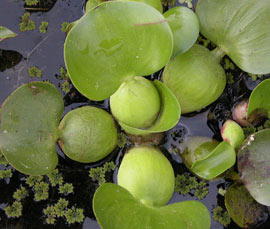 , white pneumatophores (e.g., L. helminthorrhiza). Leaves caulinecauline:
, white pneumatophores (e.g., L. helminthorrhiza). Leaves caulinecauline:
(adj) pertaining to or belonging to the stem
, oppositeopposite:
(adj) (of leaves) two leaves per node; in pairs on opposite sides of an axis
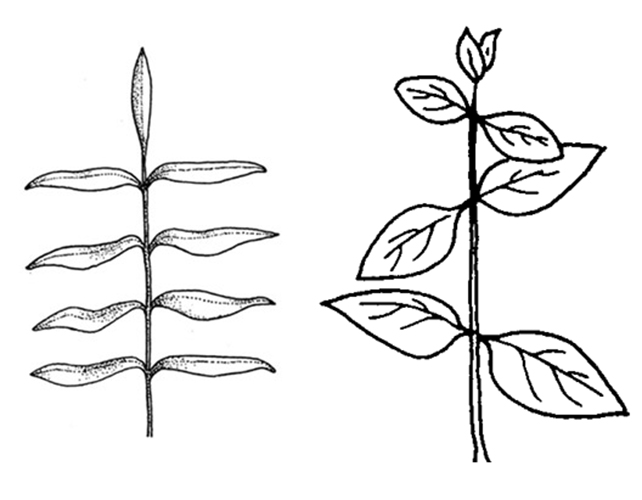 , alternatealternate:
, alternatealternate:
(adj) (of leaves) bearing one leaf per node; placed singly on the stem at different heights
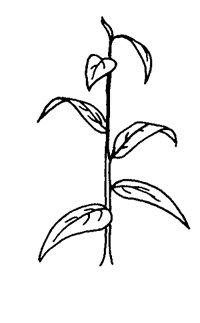 or in floating rosetterosette:
or in floating rosetterosette:
(n) a radiating cluster of leaves, usually close to the ground at the base of a plant
 (e.g., L. sedoides); leaf bladeblade:
(e.g., L. sedoides); leaf bladeblade:
(n) (syn. lamina) the flat, expanded part of a leaf, frond, or petal (excluding, e.g., the petiole)
 usually entireentire:
usually entireentire:
(adj) having a continuous margin that is not toothed or lobed
 , linear to lanceolatelanceolate:
, linear to lanceolatelanceolate:
(adj) lance-shaped; widest point below the middle, tapering to the apex
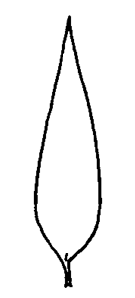 , ovateovate:
, ovateovate:
(adj) egg-shaped in outline; generally with the broad end at or near the base
 , or ob ovateovate:
, or ob ovateovate:
(adj) egg-shaped in outline; generally with the broad end at or near the base
 ; apexapex:
; apexapex:
(n) the point farthest from the point of attachment; the tip (often pointed)
rounded, acuteacute:
(adj) tapering to a sharp, pointed apex with more or less straight sides; broader than acuminate; forming an angle of less than 90 degrees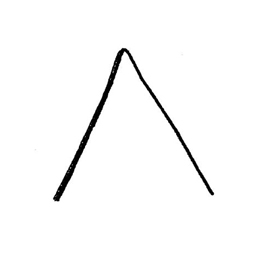 or serrateserrate:
or serrateserrate:
(adj) (of a leaf margin) bearing sharp teeth pointing forward or to the apex
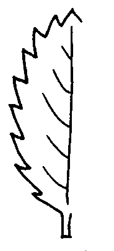 (e.g., L. sedoides); marginmargin:
(e.g., L. sedoides); marginmargin:
(n) edge; rim
entire, sometimes undulateundulate:
(adj) (of, e.g., a margin) with a wavy surface; wavy in the vertical (up and down) plane
. Flowers actinomorphicactinomorphic:
(adj) of flowers, having radial symmetry; capable of being bisected into identifical halves along more than one axis
, axillaryaxillary:
(adj) in, of, or produced from an axil
, solitary or clustered, sessilesessile:
(adj) attached directly, without a stalk
 or borne on short pedicelpedicel:
or borne on short pedicelpedicel:
(n) the stalk of a single flower in an inflorescence, or of a grass spikelet
; sepals 3-7 (usually 4-5), green, and fused, often forming elongate tube; petals 3-7 (usually 4-5) or absent, yellow or white, ovoidovoid:
(adj) egg-shaped in three dimensions
and notched at apexapex:
(n) the point farthest from the point of attachment; the tip (often pointed)
. Dispersal by seed or stem fragments.
all types of slow-flowing waterways and wet ground
A diverse genus of aquatic macrophytes with a tremendous diversity of plant form ranging from floating plants to bushes. Many species are only reliably identifiable using reproductive characters.